February 06, 2022
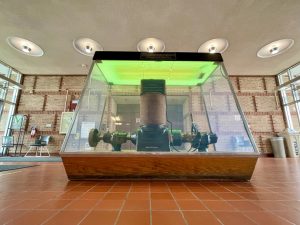
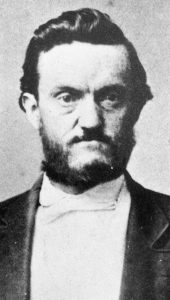
As population boomed in Missouri and across the American west following the completion of the transcontinental railroad in 1869, Mizzou Engineering also experienced years of growth and change.
For five years following its incorporation, the School of Engineering had no faculty of their own, borrowing professors of math and physics to teach courses. Then, in 1877, Engineering separated from the College of Agriculture and named Thomas J. Lowry as the first dean. At that time, the coursework was split into three areas, Civil Engineering, Topographical Engineering and Military Engineering, with degrees in each, though there is no record of graduates with the Military Engineering degree.
In 1878, Mizzou Engineering celebrated its first graduates and conferred eight degrees in Civil and Topographical Engineering.
Professor Thomas Sparks New Ideas

The College achieved another significant feat in 1880, when Professor Benjamin E. Thomas joined the faculty to teach physics. His lessons, which included telegraphy, primary batteries and signaling, marked the beginnings of electrical engineering as an integral part of engineering education in the United States.
In 1882, after Thomas was unsuccessful in securing an Edison dynamo and Edison lamps, University President Samuel Spahr Laws reached out to Thomas Edison himself. Laws had met a 21-year-old Edison in the 1860s at the New York Gold Exchange, where Laws was Vice President. An inventor himself, Laws had created an electrically operated quotation indicator called the Laws Gold Indicator, a predecessor of the stock ticker.
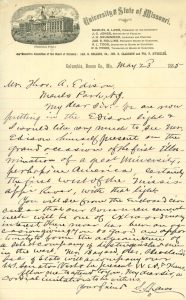
Edison, who was in New York for a telegraph operator job with Western Union, visited the Exchange on a day when the Laws Gold Indicator was malfunctioning. Edison discovered the reason for the device’s failure and made the necessary repairs. Laws then hired Edison at a substantial salary to supervise the operations of the Laws Gold Indicator.
Edison answered Laws’ request and presented the dynamo and incandescent lamps to the University in 1882. Later that year, Thomas obtained a steam engine to operate the equipment, which was housed in the basement of Academic Hall.
In 1883, Thomas gave a public exhibition of incandescent electric lighting, the first known exhibition in Missouri and potentially the first west of the Mississippi River. Following the exhibition, the Board and Laws requested that Thomas and his students wire the chapel in Academic Hall for electric lighting.
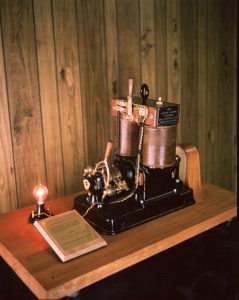
The following year, the students in Thomas’ physics courses more than doubled and all of Academic Hall was wired for electric lighting. In 1885, the Department of Electrical Engineering was established, just three years after the oldest electrical engineering department in the country.
Fire in Academic Hall
Tragedy struck on January 9, 1892, when a fire destroyed Academic Hall, which housed the classics and the engineering shops at the time. Marquis H. Lockwood, the first electrical engineering degree recipient who was a student at the time, said that the fire was caused by a short circuit in the wiring of the chandelier.
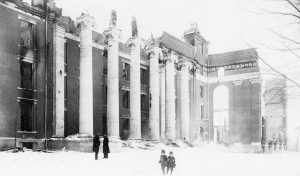
Funds collected from insurance after the fire led to the construction of six buildings, including the Engineering building (now the east side of Lafferre Hall) and the Mechanic Arts building (now the west side of Lafferre Hall). The buildings were built around the columns, the only remaining fixture of Academic Hall.
In 1893, the Department of Mechanical Engineering was established as the third degree program alongside civil and electrical. Dean Lowry retired in 1893, taking with him the identity of the College. After his retirement, engineering merged with the College of Agriculture and Mechanic Arts, where it remained for the next 13 years.